Churches> Saint Thomas
-----------------------------------------------------------------------------------------------------------------------------------------------------------------------
Historical chapel near Asopos River. It is sacred to Saint Thomas, genius Loci of the village. Tradition wants the Saint to protect the villagers from the bubonic plague that had spread the district. So they honored him by giving his name to the village. In Greek: Ayios Thomas. According to Leiden University research, the chapel is considered mid Byzantine (12th century). the cupola is posterior. Ancient Tanagra lies opposite to the chapel.
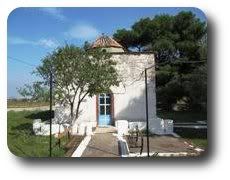
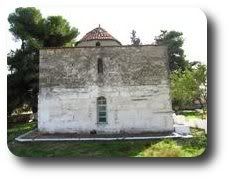
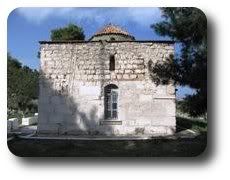
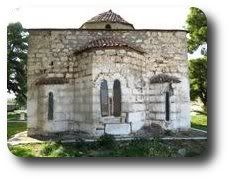
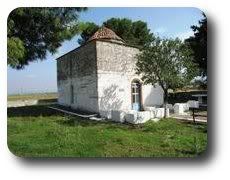
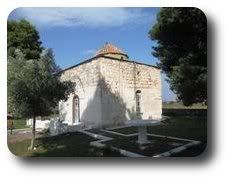
-----------------------------------------------------------------------------------------------------------------------------------------------------------------------
According to Schachter McGill, the chapel is considered first christian basilica of the 10th century. By the time Byzantine Empire reconquered Boeotia from slaves, starts a period of steady growth of rural population. The small hamlets take the role of ancient Tanagra. During crusades the district pases under the commandership of a Frank lord who converts the chapel into feudal chateau. (13th century).
Celebration at Sunday after Greek Orthodox Easter.
Ο βυζαντινός ναός του Αγίου Θωμά, ανήκει αρχιτεκτονικά στον τύπο του εγγεγραμμένου απλού δικιόνιου ναού με τρούλο. Εξωτερικά φαίνεται σαν ένας πέτρινος όγκος με επίπεδη στέγη πού στο κέντρο της εξέχει μικρός τρούλος.
Το αρχικό κτίσμα έχει υποστεί διάφορες παρεμβάσεις με κυριότερη εκείνη τής μετασκευής του κατά την περίοδο τής Φραγκοκρατίας σε χωροδεσποτικό πύργο.
Στην τοιχοποιία του ναού χρησιμοποιήθηκαν αρκετά αρχιτεκτονικά μέλη από αρχαία κτίρια της γειτονικής Τανάγρας, ενώ έχουν διατηρηθεί και πολλά βυζαντινά γλυπτά μεταξύ των οποίων και ένα με παράσταση ανατολικής επίδρασης.
-----------------------------------------------------------------------------------------------------------------------------------------------------------------------
|

|
The yard of the chappel with the corridor.
Photo by Alexandros Sterpis
|
-----------------------------------------------------------------------------------------------------------------------------------------------------------------------
 On the left bank of the Asopus river, a little above its junction with the Lari, stands a mill which is turned by derivations from both the rivers, and opposite to their junction, not far from the right bank of the Asopus, is one of the high towers which has been built probably by the Franks.
On the left bank of the Asopus river, a little above its junction with the Lari, stands a mill which is turned by derivations from both the rivers, and opposite to their junction, not far from the right bank of the Asopus, is one of the high towers which has been built probably by the Franks.
This tower has since been converted into a Greek church, in which are lying several fluted Doric shafts covered with coat of stucco, and a large rectangular block of the same kind of black marble as that which was used in the great building in the city.
Inscribed on it, in characters of ancient date, is the name ΗΣΧΙΝΑΣ, the Boeotic form of Αισχύνης.
In the wall on the outside of the tower is another inscribed marble, but not of the dark kind. The inscription begins with an epigram in two elegiac couplets, showing that the stone supported a statue dedicated by one Phorystas, son of Triax, who had obtained a victory in the games of Jupiter, and who, upon several other occasions, had been the first in the foot race.
Below the verses, which are in common Hellenic, there is a decree of Proxenia, in Boeotic, by the people of Tanagra, in favour of one Dioscorides of Athens.
There is no apparent connection of subject between the epigram and the decree, and it is difficult to understand how they came to be on the same stone. But that the verses should be in Hellenic and the decree in Boeotic is not surprising, even if we suppose them to be contemporary, since Pindar preferred the Doric to his own dialect, and poets claimed the privilege as early as the time of Homer, of using any dialect or all of them at once.
Diplomacy on the other hand, appears to have preserved the local forms in many parts of Greece, even after the period when they ceased to be in common use. we find in the first inscription, that while the poet wrote in Hellenic, the maker of the statue recorded his name in Boeotic by the words Καφισια επόεισε.
Source: Travels in Northern Greece.
William Martin Leake, 1835
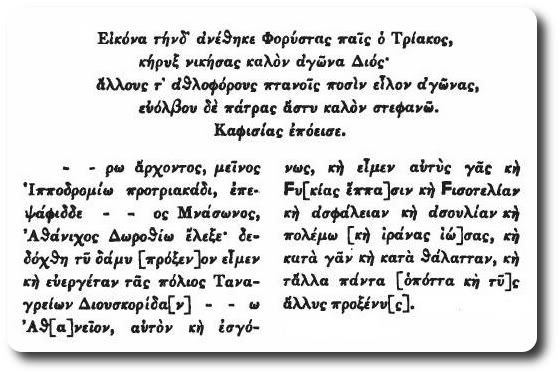
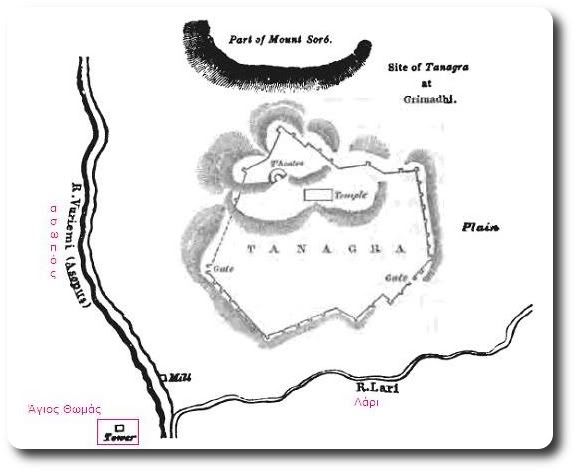
-----------------------------------------------------------------------------------------------------------------------------------------------------------------------
|
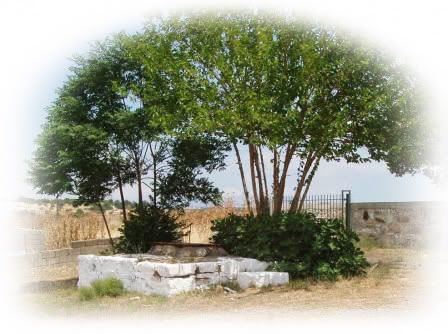
|
The well spring outside of the surrounding fence. |
-----------------------------------------------------------------------------------------------------------------------------------------------------------------------
|
Icons from the left side of the temple. From the left: Saint Theodoros and the touch of the Tomas. |

|
-----------------------------------------------------------------------------------------------------------------------------------------------------------------------
|
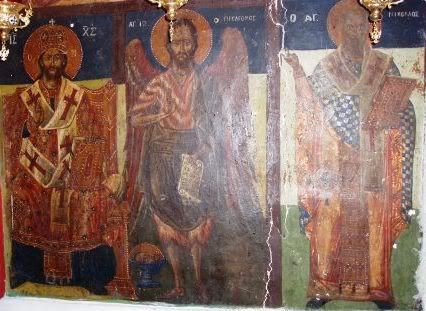
|
Icons from the right side of the temple. From the left: Christ, Saint John the Baptist and Saint Nikolaos. |












